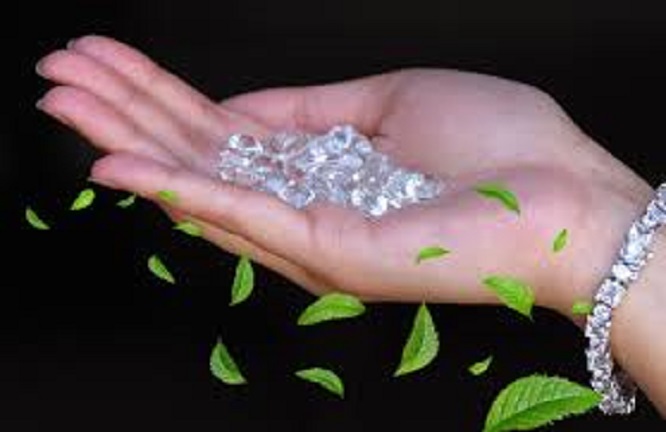The modern consumer’s morning routine has evolved beyond skincare serums and sustainable coffee. Today’s mindful lifestyle extends to every purchase decision, from the organic cotton sheets we sleep on to the ethically sourced ingredients in our meals. This conscious awakening has permeated nearly every industry, and the world of luxury jewelry is no exception. As consumers increasingly demand transparency and accountability from the brands they support, a quiet revolution is transforming one of the world’s oldest luxury markets.
The traditional notion of luxury—defined by exclusivity, rarity, and often, opacity—is giving way to something more nuanced. Today’s affluent consumers, particularly millennials and Gen Z, aren’t just asking “How much?” They’re asking “How was this made?” and “What impact does my purchase have on the world?” This shift represents more than a trend; it’s a fundamental reimagining of what it means to live well in the 21st century.
The New Luxury Equation: Beauty Plus Values
In the jewelry industry, this conscious awakening has exposed some uncomfortable truths. Traditional diamond mining, while producing stones of undeniable beauty, carries significant environmental and social costs. The process requires moving massive amounts of earth—estimates suggest that extracting a single carat can displace up to 250 tons of rock and soil. Water contamination, habitat destruction, and carbon emissions follow in mining’s wake, creating an environmental footprint that increasingly conflicts with consumers’ values.
Beyond environmental concerns, the diamond industry has long grappled with ethical questions surrounding labor practices and conflict minerals. While certification programs like the Kimberley Process have made strides in addressing these issues, many consumers remain skeptical about the true origins and impact of their purchases.
Enter a new player that’s reshaping the entire conversation about luxury, sustainability, and personal expression. The emerging lab diamond industry is gaining momentum, offering consumers a responsible alternative to traditional mining. These laboratory-created gems represent more than just a technological achievement; they embody a new philosophy of luxury that doesn’t require compromise between beauty and values.
Science Meets Sparkle
Lab-grown diamonds aren’t imitations or substitutes—they’re chemically, physically, and optically identical to their mined counterparts. Created using advanced technology that replicates the natural diamond formation process, these gems possess the same brilliance, fire, and durability that have made diamonds coveted for centuries. The key difference lies not in the stone itself, but in its story: where a mined diamond might have taken billions of years to form deep within the Earth, a lab-grown diamond can be created in a matter of weeks using controlled processes that significantly reduce environmental impact.
The carbon footprint comparison is striking. While mining a single carat of natural diamond can generate up to 125 pounds of carbon dioxide equivalent, lab-grown diamonds typically produce a fraction of that impact. When facilities are powered by renewable energy—a growing trend in the industry—the environmental advantage becomes even more pronounced.
This technological prowess hasn’t gone unnoticed by established luxury brands. Companies like Pandora have committed entirely to lab-grown diamonds, while others are integrating them into specific collections. The move signals a broader industry acknowledgment that sustainability isn’t just a marketing buzzword—it’s becoming a business imperative.
Market Momentum and Cultural Shift
The numbers tell a compelling story of changing consumer preferences. In the United States, lab-grown diamonds now account for nearly 10% of the engagement ring market, with growth rates that consistently outpace traditional diamonds. This expansion isn’t limited to budget-conscious consumers; increasingly, affluent buyers are choosing lab-grown options for their symbolic value as much as their practical benefits.
Fashion-forward consumers are particularly drawn to the creative possibilities that lab-grown diamonds enable. Without the premium pricing of mined stones, designers can experiment with larger carat weights and more elaborate settings, pushing the boundaries of jewelry design. This freedom has sparked a renaissance of sorts in fine jewelry, with pieces that would have been prohibitively expensive with mined diamonds now accessible to a broader audience.
The generational divide is particularly telling. Younger consumers, who’ve grown up with unprecedented access to information about supply chains and environmental impact, view lab-grown diamonds not as “lesser” alternatives but as smarter choices. For them, the technology behind lab creation represents innovation and progress—values that align with their broader worldview.
Celebrity Endorsement and Cultural Validation
High-profile endorsements have accelerated mainstream acceptance. When celebrities and influencers choose lab-grown diamonds for red carpet events and personal milestones, they signal to their audiences that these gems carry no stigma—only smart, values-driven decision-making. This cultural validation has been crucial in overcoming initial skepticism and positioning lab-grown diamonds as desirable in their own right.
The messaging has evolved from defensive (“just as good as natural”) to confident (“better for the future”). This shift reflects growing consumer confidence in choosing products that align with their values without sacrificing quality or prestige.
Beyond the Sparkle: A Statement of Values
The rise of lab-grown diamonds represents something larger than market disruption—it’s part of a cultural evolution toward conscious consumption. When someone chooses a lab-grown diamond, they’re making a statement about the kind of future they want to support. It’s luxury with purpose, beauty with responsibility.
This transformation extends beyond individual purchase decisions to influence entire business models. Jewelry brands are rethinking everything from sourcing to marketing, recognizing that tomorrow’s luxury consumers want transparency, traceability, and positive impact built into every aspect of their experience.
As the emerging lab diamond industry continues to mature, it’s clear that this isn’t a temporary trend but a permanent shift in how we think about luxury, beauty, and responsibility. The choice of jewelry has always been deeply personal, reflecting individual taste and values. Today, that choice includes not just what we want to communicate about ourselves, but what kind of world we want to live in.
The future of luxury isn’t just about having the finest things—it’s about having the finest things that make the world a little bit better. In that equation, lab-grown diamonds don’t just compete with mined stones; they represent an entirely new category of conscious luxury that’s as brilliant as it is responsible.

